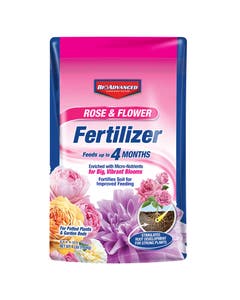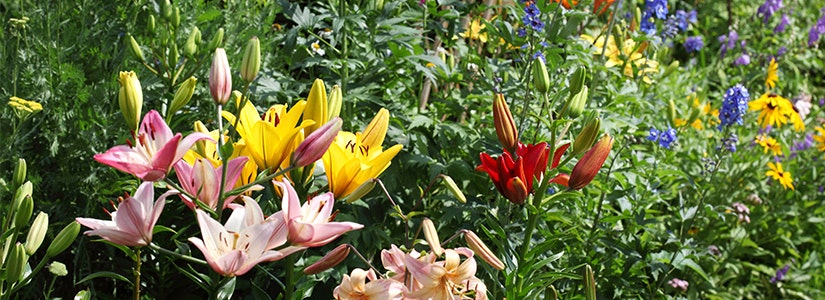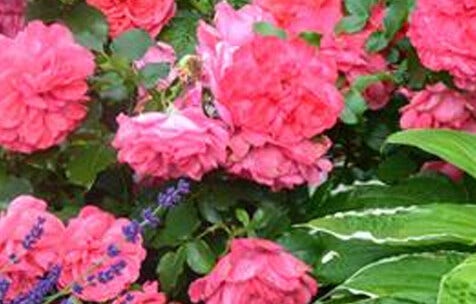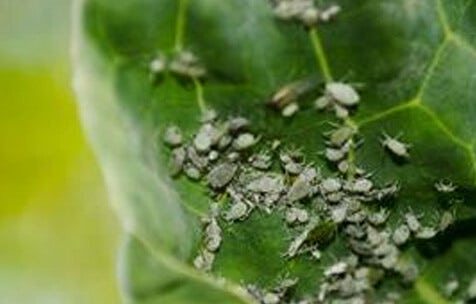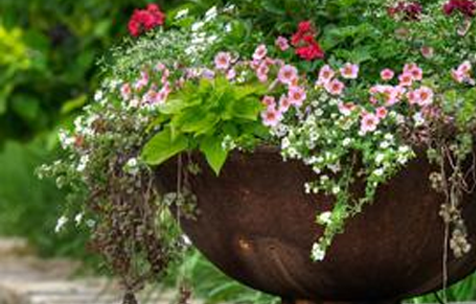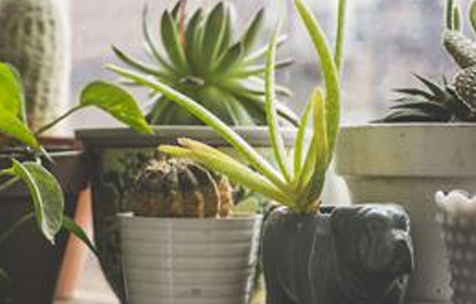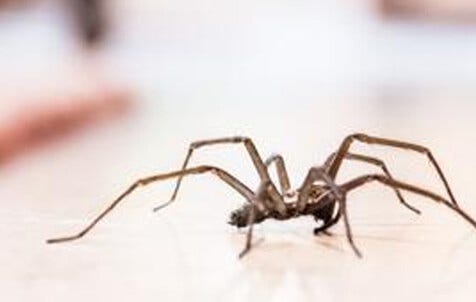

- Home
- Solution Center
- Learn
- Lawn and Landscape
- Ornamental Grasses That Take the Heat
Ornamental Grasses That Take the Heat
Many ornamental grasses boast a tough-as-nails constitution and good looks that don't require lots of pampering. But which ones sizzle as summer heat builds?
Consider outfitting your yard with some of these rugged perennial grasses that thrive in summer heat.

Blue Fescue (Festuca glauca)
Sun-loving, steel-blue foliage forms porcupine-like tufts. Flower stems appear late spring to early summer, fading to buff-tone seed heads. Plants may decline in high humidity and if overwatered. Trim clumps if this occurs; new growth will emerge as temperatures tumble. Look for many cultivars, including 'Elijah Blue' and 'Boulder Blue.'
Size: 9-12 inches high and 6-9 inches wide
Hardiness: Zones 4-10
Landscape use: Mass plantings (space tightly), edging for driveways or paths, in rock gardens
Tolerates: Drought, poor soil, air pollution, black walnuts
Planting partners: Black-Eyed Susan, Purple Coneflower, Showy Autumn Sedum, roses
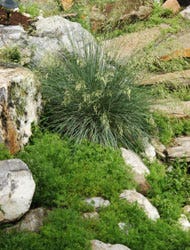
Blue Oat Grass (Helictotrichon sempervirens)
Fine, metallic blue foliage forms tufts larger than Blue Fescue. Plants thrive in full sun to light shade. Best color develops in dry soils and full sun. Flowers appear in early summer and ripen by fall.
Size: 2-3 feet high and 2-2.5 feet wide
Hardiness: Zones 4-11
Landscape use: Ground cover mass plantings, specimen plant in mixed plantings, edging plant, rock gardens
Tolerates: Drought, deer, air pollution, black walnuts
Planting partners: Junipers, Dwarf Blue Spruce, Penstemon, Purple Coneflower, Showy Autumn Sedum, spring flowering bulbs

Deergrass (Muhlenbergia rigens)
A California native, Deergrass boasts dense leaf clusters that tend to arch and weep by summer's end. Foliage starts bright green and fades to a straw tone in autumn. Purple- and yellow-tinged flower stems appear in fall, soaring above foliage 2-3 feet.
Size: 3-6 feet high and 2-3 feet wide
Hardiness: Zones 6-11
Landscape use: Low water-use gardens, dry slopes, naturalized planting areas, back-of-border plants
Tolerates: Drought, air pollution, black walnuts
Planting partners: Penstemon, Ceanothus, Purple Coneflower, Russian Sage
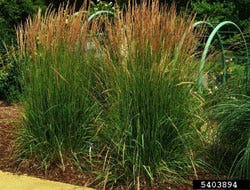
Feather Reed Grass (Calamagrostis x acutiflora'Karl Foerster')
Strongly upright, narrow growth makes this grass an ideal choice for small gardens. Plants thrive in full sun, but appreciate light afternoon shade in hottest regions. Flowers arise in a purple-tan hue in early summer, ripening to gold in autumn.
Size: 3-5 feet high and 1.5-2.5 feet wide
Hardiness: Zones 4-11
Landscape use: Rain gardens, erosion control, mass plantings, adding vertical interest to small spaces
Tolerates: Wet soil, heavy clay soil, air pollution, black walnuts
Planting partners: Shasta Daisy, Joe-Pye Weed, Butterfly Bush, Siberian Iris, Purple Coneflower, roses

Little Bluestem (Schizachrium scoparium)
Upright clumps of slender green leaves are tinted blue at the base. Leaves offer strong bronze-orange fall color. Bronze-purple flowers appear in late summer and fade to fluffy white seedheads. Plant in full sun in a wide range of soils – fertile, poor, dry, wet or well-drained.
Size: 2-4 feet high and 1.5-2 feet wide
Hardiness: Zones 3-9
Landscape use: Dry slopes, erosion control, rain gardens, native plant gardens, mass plantings
Tolerates: Drought, deer, air pollution, black walnuts
Planting partners: Shasta Daisy, Purple Coneflower, Blanket Flower, Butterfly Bush

Switch Grass (Panicum virgatum)
A native prairie grass, switch grass offers a stiff, upright form with medium-green leaves. Pink-tinted flowers hover above foliage in midsummer, fading to beige in fall. Birds feast on seeds. Plants self-seed and spread by underground stems to form colonies. Look for various cultivars, including 'Prairie Sky', 'Shenandoah', 'Heavy Metal' and 'Northwind.'
Size: 3-6 feet high and 2-3 feet wide
Hardiness: Zones 5-9
Landscape use: Screening, rain garden, native plant garden, water garden edging plant, back-of-the-border perennial
Tolerates: Drought, dry and wet soil, air pollution, black walnuts
Planting partners: Purple Coneflower, Blanket Flower, False Indigo, Penstemon, Butterfly Bush
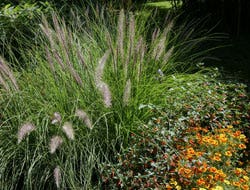
Chinese Fountain Grass (Pennisetum orientale)
Leaves rise and arch gently, forming a graceful clump. Site in well-drained soil in full sun. Flower stems rise 24-36 inches above foliage in early summer and last until late summer. Leaves burnish yellow in fall. Look for'Karley Rose' and'Tall Tales'. This fountain grass isn't invasive like Pennisetum setaceum, the straight species. Pennisetum setaceum'Cupreum' is another non-invasive, colorful fountain grass choice.
Size: 12-28 inches high and 20-36 inches wide
Hardiness: Zones 5-11
Landscape use: Mass plantings, specimen plant in mixed plantings, foundation planting
Tolerates: Drought, deer, air pollution, black walnuts
Planting partners: Evergreens, Russian sage, Purple Coneflower, Showy Autumn Sedum

Morning Light Maiden Grass (Miscanthus sinensis 'Morning Light')
Narrow green leaves have white variegation along edges, giving the grass a silvery appearance. Stems form an upright, rounded clump that tends toward a fountain-like shape. Leaves turn reddish in fall, and flower plumes become shift from coppery-red to silver-white. Seedheads remain through winter. Some species and selections of Miscanthus are invasive.
Size: 4-6 feet high and 2.5-4 feet wide
Hardiness: Zones 5-11
Landscape use: Mass plantings, specimen plant in mixed plantings, erosion control
Tolerates: Drought, deer, air pollution, black walnuts
Planting partners: Asiatic Lily, Bee Balm, roses, evergreens, Russian Sage, Purple Coneflower
Some ornamental grasses are invasive in some regions. Check with your local native plant society or state Department of Natural Resources before planting, or consult the Invasive Plant Atlas of the United States.

